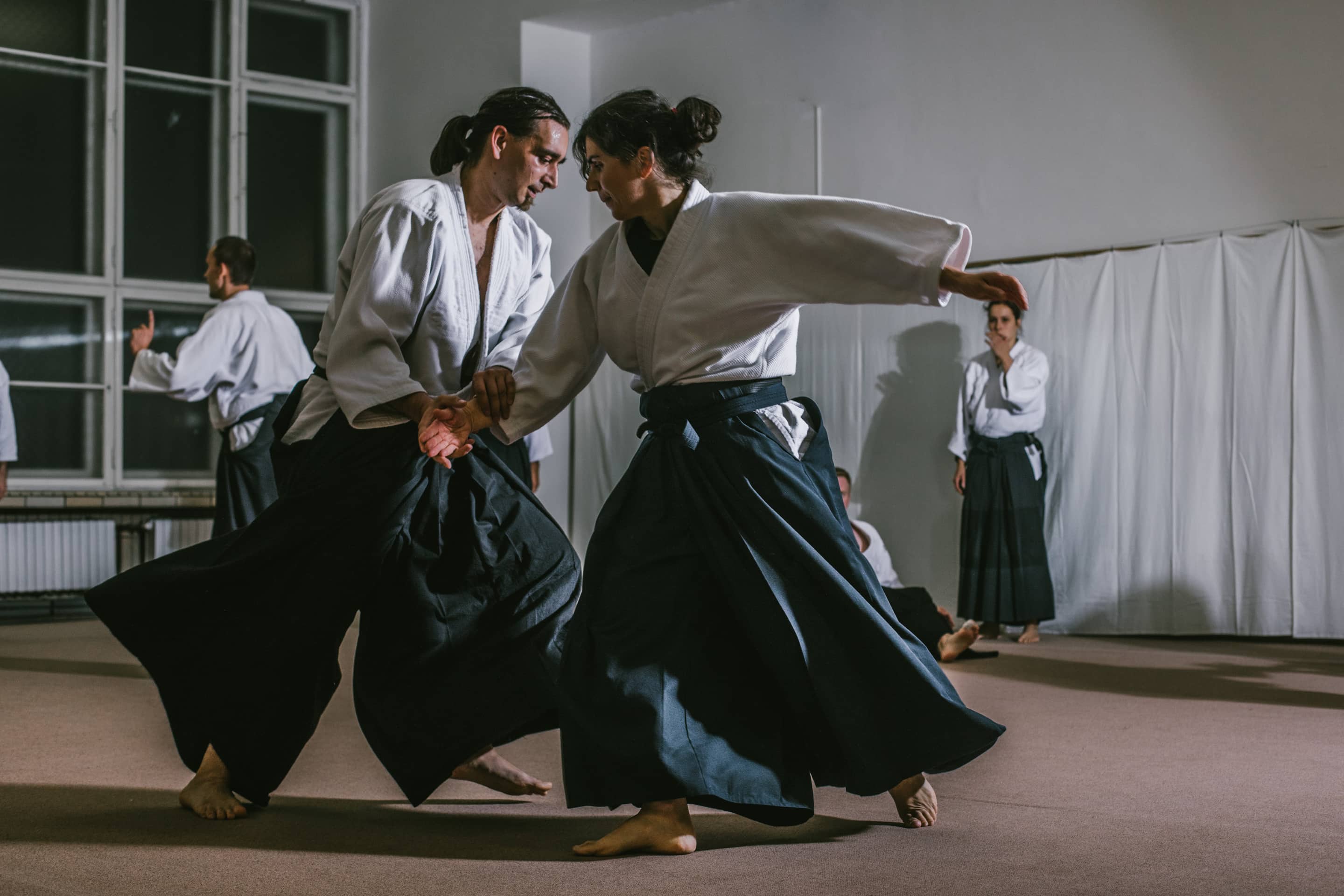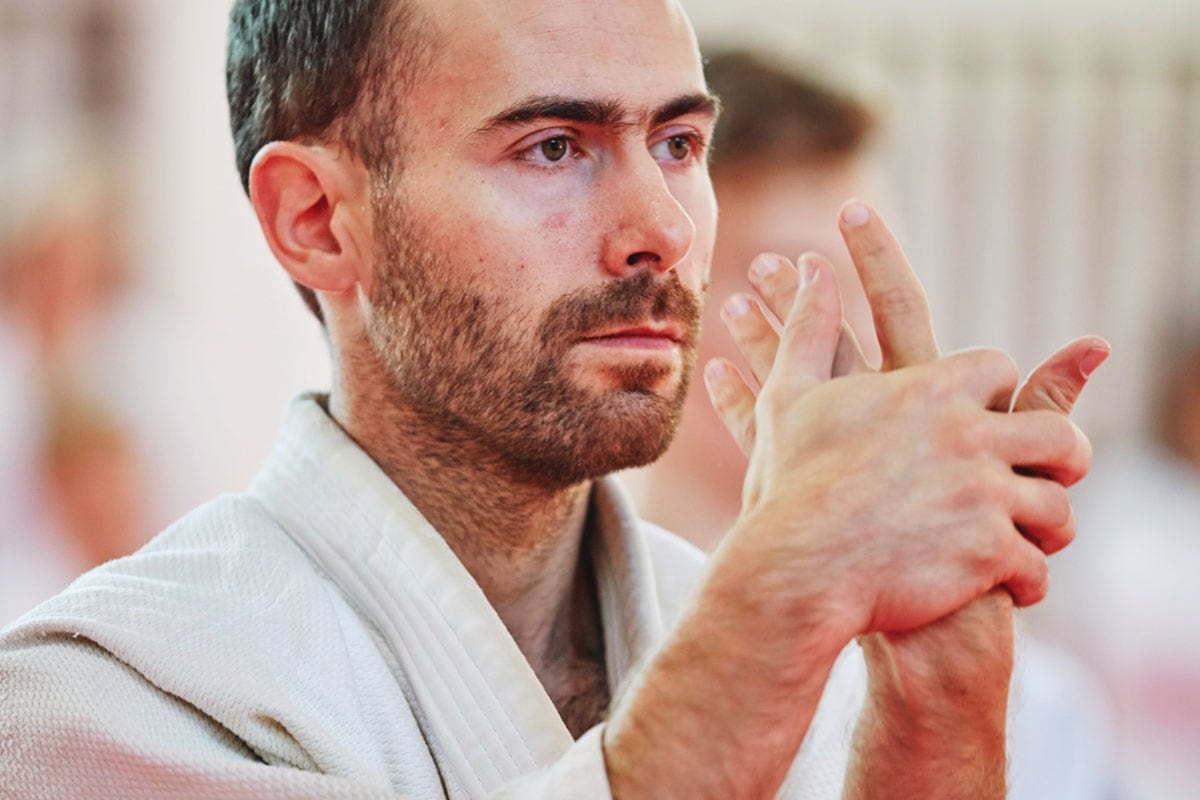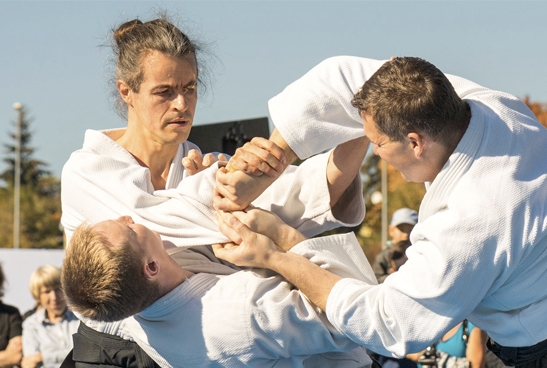A few words about AIKIDO
Aikido is a Japanese martial art and a path of human development, as the last syllable of its name suggests: “do” is usually translated as “way”. It was founded in the first half of the 20th century by Morihei Ueshiba (1883–1969) as the culmination of his long study of martial arts and spiritual teachings.
Aikido has many aspects:
physical exercise and health,
personal development and
self-defence.
Among such a wide range of possibilities, any engaged student can find inspiration for his or her life journey.
The following paragraphs describe some aspects of Aikido, but no words can substitute the beautiful experience of Aikido practice.
If you would like to experience it for yourself, feel free to join our training.

Physical Training
The foundation for any development in Aikido is physical practice. On this level, Aikido consists of various throws and pinning techniques and includes training with weapons: a wooden sword, staff and knife. Aikido does not focus on blocks, kicks or punches when dealing with an opponent. Instead it uses the energy flow of a given attack to dissolve it.
A relaxed, dynamic practice of the flowing Aikido techniques improves body coordination, flexibility, stamina and strength; it also develops posture and natural breathing.
Such training supports the flow of energy from the center to the whole body. Thus Aikido not only strengthens muscles, but has a much deeper effect on human health.
Personal development and mental attitude
Better physical condition and natural posture are not the only things that one can bring from Aikido training to one’s life. Just as physical posture reflects and reveals one’s mentality, Aikido principles can be reflected in our day-to-day lives. Such principles include inner balance, the ability to find one’s place in a space, expressing intention and perception of the body.
When we practice martial techniques in pairs, we practice communication with others. Moreover, a training partner is our mirror, giving us an opportunity to see our limits and overcome them – Aikido is surely an opportunity for development.


Personal development and mental attitude
Better body condition and natural posture are not the only things that one can bring from aikido training to one’s life. Good physical pose and posture reflects mental attitude in the same way that aikido principles can be reflected in our day-to-day lives. Such principles can be; inner balance, the ability to find one’s place in a space, expressing intention and perception of the body.
When we practice techniques in pairs, we practice communication with others. Moreover, a training partner is our mirror, which gives us an opportunity to see our limits and overcome them – aikido is surely a tool for self-development.

Conflict and harmony
The founder of aikido emphasized the moral and spiritual points of aikido, especially development of harmony and peace – the word aikido is sometimes loosely translated as “the way of harmony“. This harmony can be understood as a unity with oneself, others, the environment or simply with the whole Universe.
Even though the idea of peace in a fighting art can appear paradoxical, it is the basis for both techniques and mental attitude in aikido.
However, the words harmony and peace in aikido do not mean retreat and compromise masking a fear of conflict. Aikido teaches us to solve conflicts in our lives in a constructive way, without violence, and therefore educates strong and determined people.
Self-defence
Aikido usually does not attract people who like violence or fighting. The training is based on martial arts techniques, which of course helps to develop one’s ability to respond correctly and effectively in cases of physical conflict.
Self-defence is not the goal of Aikido practice, but it is a natural and direct consequence.
Self-defence
Aikido usually does not attract people who like violence or fighting. The training is based on martial arts techniques, which of course helps to develop one’s ability to respond correctly and effectively in cases of physical conflict.
Self-defence is not the goal of aikido practice but it is a natural and direct consequence.








